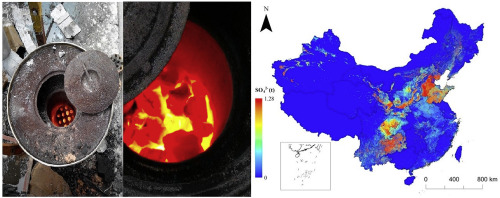当前位置:
X-MOL 学术
›
Atmos. Environ.
›
论文详情
Our official English website, www.x-mol.net, welcomes your feedback! (Note: you will need to create a separate account there.)
Emission and simulation of primary fine and submicron particles and water-soluble ions from domestic coal combustion in China
Atmospheric Environment ( IF 5 ) Pub Date : 2020-03-01 , DOI: 10.1016/j.atmosenv.2020.117308 Qin Yan , Shaofei Kong , Yingying Yan , Haibiao Liu , Wei Wang , Kui Chen , Yan Yin , Huang Zheng , Jian Wu , Liquan Yao , Xin Zeng , Yi Cheng , Shurui Zheng , Fangqi Wu , Zhenzhen Niu , Ying Zhang , Mingming Zheng , Delong Zhao , Dantong Liu , Shihua Qi
Atmospheric Environment ( IF 5 ) Pub Date : 2020-03-01 , DOI: 10.1016/j.atmosenv.2020.117308 Qin Yan , Shaofei Kong , Yingying Yan , Haibiao Liu , Wei Wang , Kui Chen , Yan Yin , Huang Zheng , Jian Wu , Liquan Yao , Xin Zeng , Yi Cheng , Shurui Zheng , Fangqi Wu , Zhenzhen Niu , Ying Zhang , Mingming Zheng , Delong Zhao , Dantong Liu , Shihua Qi

|
Abstract The contributions to aerosols and major chemical compositions (e.g. water-soluble ions-WSIs) from residential coal combustion (RCC) are still now existing large uncertainty in air quality modeling. The lake of reliable emission inventories for primary WSIs from RCC in China with measured emission factors (EFs) adopted is a major obstacle. With simulating burning test and dilution sampling method, this study detected the emission factors of nine size-segregated aerosols (0.43–10 μm) and associated WSIs emission factors from residential honeycomb briquettes and chunk coal burning, considering smoldering and flaming combustion status. Then a 1 km × 1 km grid cell-based emission inventory of RCC, including size-segregated particles and associated WSIs in China was established. The contributions of RCC to ambient fine particles were estimated by GEOS-Chem model. Results indicated that compared with anthracite coal combustion emission, bituminous coal burning emission can reduce the EFs of particles, while may increase the EFs of WSIs. The averaged EF of WSIs from honeycomb coal combustion was found 1.15 times higher than those for chunk coal burning. The total emission amounts of NH4+, Na+, K+, Mg2+, Ca2+, Cl−, NO3− and SO42− in PM2.1 from residential coal combustion in 2015 were 1915.3, 101.8, 1180.8, 50.1, 96.8, 4956.1, 552.4 and 7430.3 t, respectively, totally accounting for 2.03% of PM2.1. SO42− was the most important WSIs in fine particles released from RCC, occupied by 45.6% of the total WSIs. GEOS-Chem simulation indicated that RCC emission in China averagely accounted for 25.7% of ambient PM2.5 and 7.1% for sulfate. Our results show that RCC emission is an important source for primary PM2.5 and sulfate, suggesting the primary emission of WSI should be included in air quality modeling. More EFs monitoring of RCC of different types and regions in China should be conducted, for updating emission inventory and optimizing modeling results.
更新日期:2020-03-01


























 京公网安备 11010802027423号
京公网安备 11010802027423号